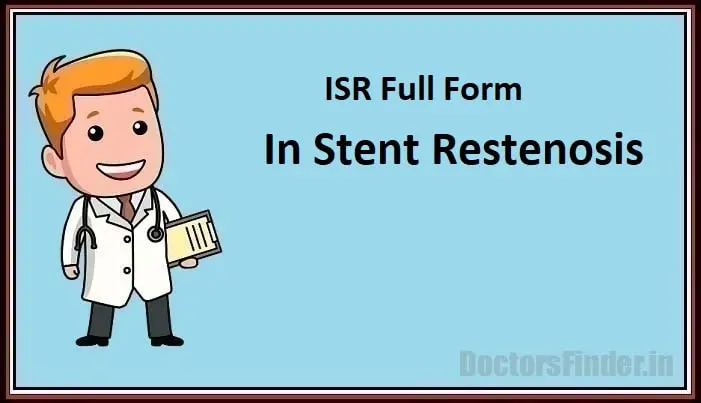The full form of ISR in medical term is In Stent Restenosis.
After a stent has been implanted in a patient’s artery, an in-stent restenosis (ISR) may develop. Little metal mesh tubes known as stenting are used to assist in keeping blocked or restricted arteries open and enhance blood flow. While stents are useful in repairing blocked arteries, occasionally, the artery’s tissue might grow over the stent and make the blockage recur. In-stent restenosis is the term for this.
ISR symptoms can include weariness, breathlessness, and chest pain. Many ISR patients, though, might not have any symptoms at all. An operation known as coronary angioplasty is frequently used as a treatment for ISR.

ISR’s precise cause is unknown. However, it is thought to be connected to the body’s reaction to the stent. Placing a stent may damage the arterial wall, which may result in inflammation as well as the development of scar tissue. This scar tissue may eventually cover the stent and cause it to narrow or get further obstructed.
Proper stent placement and selection procedures are necessary to prevent ISR. Drug-eluting stents, which release medication to avoid scar tissue build-up, may benefit patients at higher risk for ISR, like those with diabetes or lengthier stents.